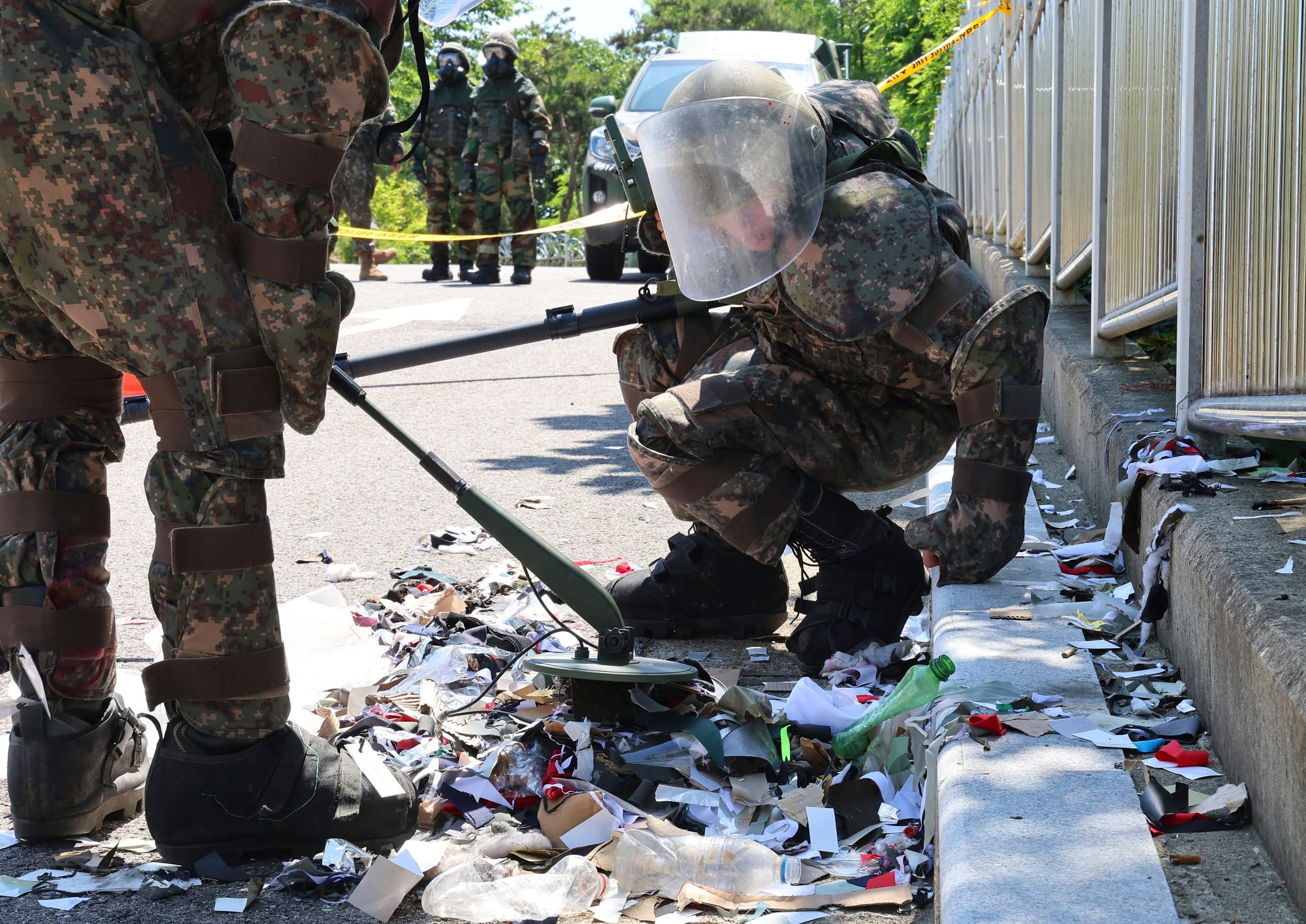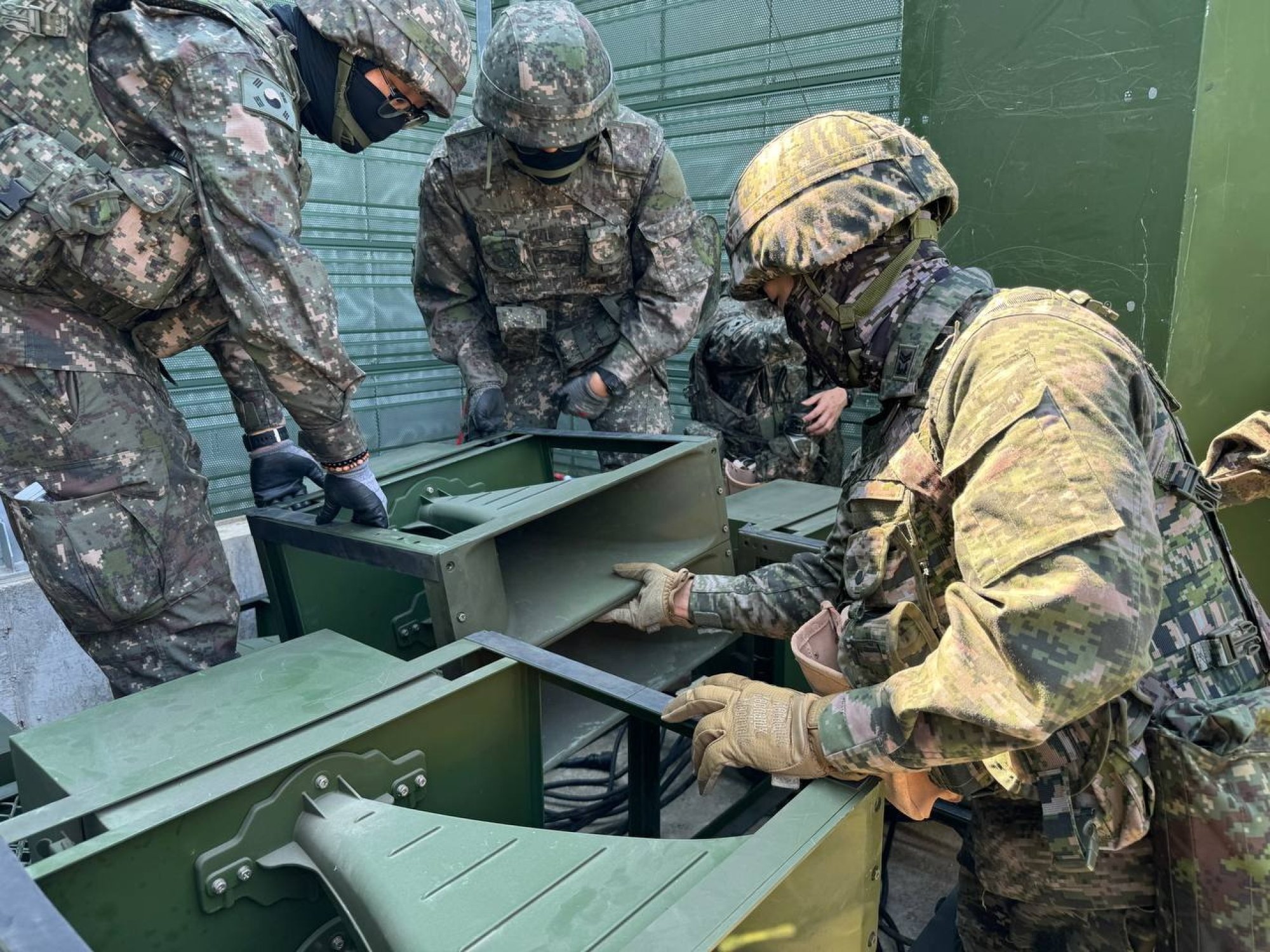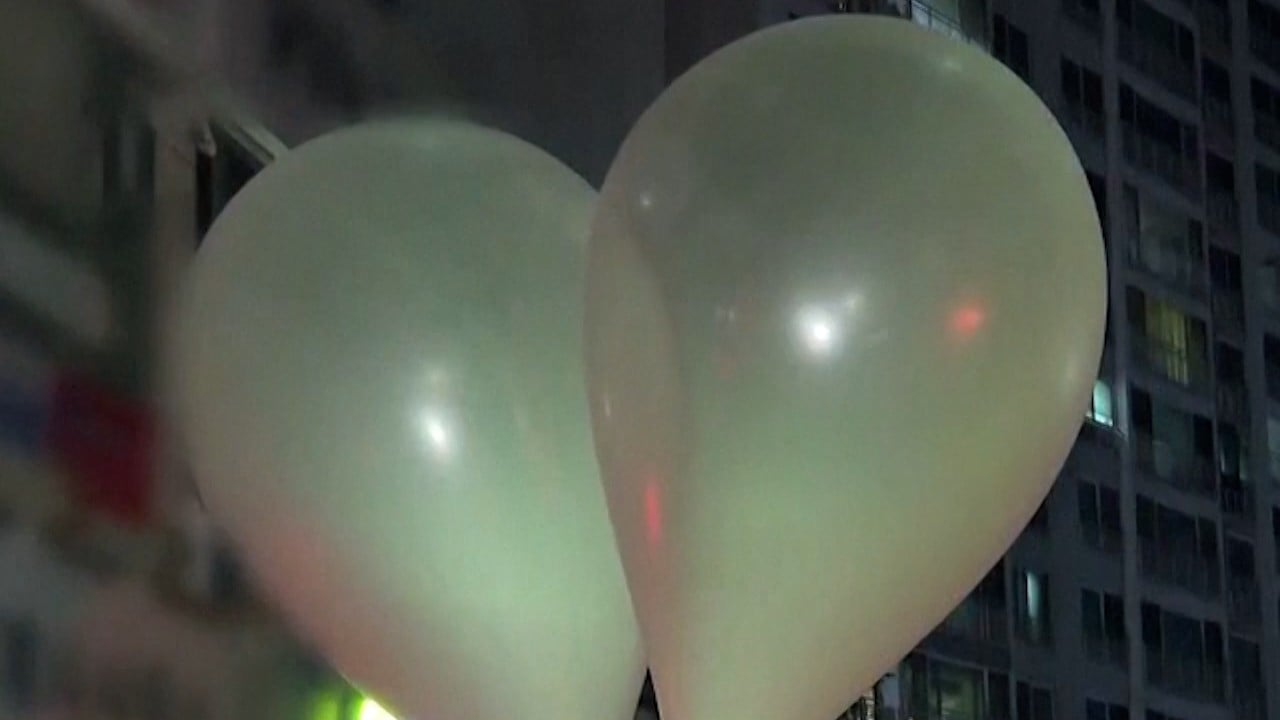In the statement carried by the official Korean Central News Agency, she slammed the activists’ leaflets as “psychological warfare” and warned that unless Seoul stopped them and called off the loudspeaker broadcasts, the North would hit back.
“If the ROK simultaneously carries out the leaflet scattering and loudspeaker broadcasting provocation over the border, it will undoubtedly witness the new counteraction of the DPRK,” she said, referring to both countries by the abbreviations of their official names.

“The latest batch of waste-loaded balloons sent late Sunday contained scrap paper and plastic, with no toxic material detected so far,” Yonhap said, citing the Joint Chiefs of Staff.
The statement from Kim’s sister shows that “North Korea is raising its voice in order to shift the blame for the current situation to South Korea and also to justify their provocation,” said Kim Dong-yub, professor at the University of North Korean Studies in Seoul.
It is likely that the cycle of escalation will continue and “North Korea will do something beyond our imagination,” Kim said.
Pyongyang could do “something creative like throwing flour [which] will cause absolute panic in the South which they will be happy about,” Kim added, referring to the possibility of the North faking a biological attack on the South.
The tit-for-tat balloon blitz started in mid-May when activists in the South – including North Korean defectors – sent dozens of missives carrying anti-Kim propaganda and flash drives of K-pop music northwards.
In response, Pyongyang has sent more than a thousand balloons carrying bags of garbage into the South, which Seoul has branded “low class”, while also claiming it violates the armistice agreement that ended hostilities in the 1950 to 1953 Korean war.
In response to the balloons, Seoul tore up the 2018 military deal and resumed loudspeakers broadcasts along the border – which have not been used since 2016, when they were turned on in retaliation for North Korea’s fourth nuclear test, Yonhap said.

In 2018, during a period of improved inter-Korean relations, the leaders of the two Koreas agreed to “completely cease all hostile acts”, including stopping the leaflets and broadcasts.
The broadcasts, a tactic which dates back to the Korean war, infuriate Pyongyang, which previously threatened artillery strikes against the loudspeaker units unless they were switched off.


